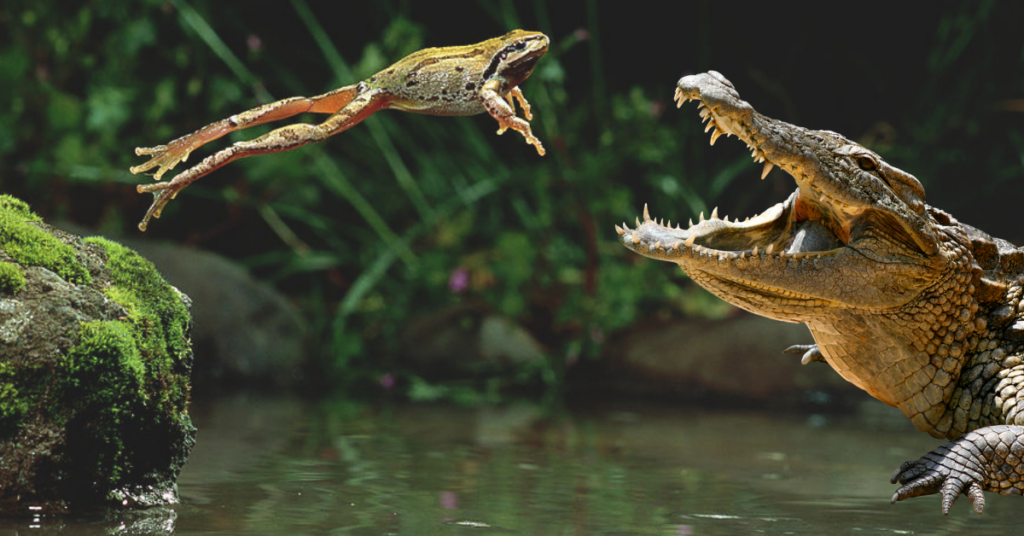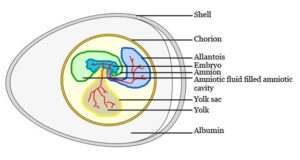The basic premise of Darwinian evolution is that all the variety of life has descended from one common ancestor. Darwin postulated there was one organism that, over time through natural processes, evolved into each new type of organism we see on earth today.
Darwin believed the natural process involved first and foremost random, small genetic mutations that produced a change in the organism’s physical structure. He described it as “slight, successive modifications.” The modifications must be slight, not a wholesale organism-level change. As Richard Dawkins observed, “Virtually all mutations studied in genetics laboratories, which are pretty macro because otherwise geneticists wouldn’t notice them, are deleterious to the animals possessing them.”1 Therefore, the mutations for evolution must be micro-mutations, too small to even be noticed.
In addition to being micro, the mutations must be in a successive order to slowly improve the original organism so it would be better suited for survival. Darwin believed if the genetic instructions for an organism were passed down to its offspring with certain modifications, it could result in a new physical feature or a changed organism structure across the entire population.
This introduces the second concept required for Darwinian evolution: survival of the fittest. These changed structures or new physical features must generate an organism that is better adapted to its environment in some way, and therefore better fit to survive, than those without this mutation. This would ensure those genetic changes could be passed down to the next generation resulting in a new population of organisms, all exhibiting this new feature.
After a significant amount of time, these “slight, successive modifications” could produce a completely new kind of organism. Thus, the third tenet of Darwinian evolution is time. Each mutation must be a micro-mutation so as not to damage or drastically change the organism. But nature must accumulate enough of these micro-mutations to cause a macro-level change in the organism type. This entire process must take an incredibly long time – and that’s even with the assumption that each micro-mutation is actually advancing the organism toward the same physical improvement.
For example, evolutionists assert that slight genetic mutations to fish over a long period of time eventually resulted in the fish’s ability to walk on land and breathe air. Therefore, the accumulations of micro-mutations for a fish would over time produce an amphibian. The same would be said for evolving from the amphibian to the reptile, and from the reptile to a bird, and so on.
Thus, it isn’t that the fish suddenly gave birth to a frog, but that the fish gave birth to a slightly genetically-changed fish which gave birth to another slightly genetically-changed fish for each generation over thousands of generations until it finally produced a frog. It is a long slow process based on random genetic micro-mutations where each generation is an intermediate organism somewhere on the progression between a fish and a frog, where each intermediate organism is better adapted for survival than the previous organism.
From a general concept, it seems plausible that if something had enough small changes over time then those small changes can make a big change. But we must pay careful attention to what those small changes would be, and if they could positively change one organism type into an entirely new organism type. And we must pay careful attention to the order those small changes could take place. In this way we could see if we could hypothetically reconstruct the evolutionary chain from one organism type to another. But we must play by the same rules that Darwin established for his process in the first place: random, micro, genetic mutations resulting in an organism better fit to survive, happening over a slow, gradual process.
Evolutionists claim that fish evolved into amphibians, and amphibians evolved into reptiles. Can we apply this logic to hypothetical reconstruct the changes necessary to move from one organism type to another? Let’s consider the changes to go from an amphibian to a reptile.
The whole basis for Darwin’s theory of evolution is built on the reproductive success of these intermediate organisms. But there are some drastic changes that must take place to evolve from the reproductive cycles for amphibians and reptiles. There are hardly two eggs in the entire animal kingdom that are more different than the amphibian and reptilian egg. Picture the difference between a frog egg and an alligator egg.
Frog eggs are surrounded by a jelly capsule that makes the egg soft and squishy. They require some kind of moisture to keep them from drying out. After fertilization, the vitelline membrane splits off and the area surrounding the yolk plug and embryo is filled with perivitelline fluid. The yolk plug then nourishes the embryo until it is ready to hatch.
The structure and components of the amniotic egg of the reptile is completely different from the amphibian. The amnion surrounds and protects the embryo while the amniotic fluid provides the embryo with a stable fluid environment. The allantois provides for gas diffusion and removal of wastes, while the yolk sac provides food for the embryo. The sac becomes smaller as the embryo grows and develops.
The chorion surrounds all the other membranes to provide an enclosure for the developing embryo, and around the chorion is the albumin, or “white” of the egg. The reptilian egg then has a tough, impervious shell to protect the embryo from the environment. This shell prevents the egg from drying out so this egg type does not require a moist environment. Because of this tough outer shell, the embryo must have what is known as an “egg tooth” in order to crack out of the egg.4
Most notably though, consider what comes out of the two different eggs. The amphibian egg hatches an organism that goes through a metamorphosis, while the reptilian egg hatches a fully formed organism, basically a miniature adult. A baby alligator emerges from the reptile egg which is structurally similar to the adult alligator, only smaller, where a tadpole emerges from the frog egg which must structurally change to become like an adult frog.5
Now that we have considered some basic differences between these two egg types, we must address the issue of changing between these egg types. Which slight, successive change can we make first and not destroy the egg? According to Darwin, there would be a slight, random genetic mutation to change the amphibian overtime to evolve into a reptile. But how are we going to slowly with one micro-mutation at a time change between just the egg types, and still be able to successfully reproduce at each intermediate step? Consider also that we cannot plan for nor anticipate each mutation. The mutations must be random!
So, what if the first mutation were to change from a soft, jelly like egg to a hard-shell egg? If the embryo did not also develop an “egg tooth,” it would not be able to hatch out of the hard-shell egg. Just picture a tadpole trying to push its way out of an alligator egg! But if the organism developed the “egg tooth” first, before the hard-shell egg, it would inadvertently destroy its own egg. A tooth for an embryo developing in a soft, jelly-like egg would not survive to hatch.
And what incremental changes would have to take place to introduce all of the new components found within the hard-shell reptile egg that are not present in the amphibian egg type? We would need micro-mutations to develop albumin, and the allantois to dispose of waste, and amniotic fluid to provide fluid to the embryo. But evolution cannot do all of those changes at one time. They must be done incrementally. However, if an otherwise amphibian egg mutated to have albumin surrounding the embryo, it would not be able to develop properly.
Furthermore, there would need to be some way to change what hatches out of the egg. What micro-mutations could gradually evolve from hatching an organism that requires metamorphosis to hatching an organism that is a miniature adult? Keep in mind that whatever intermediate creature you could imagine during this process must be fully functional, fit enough to survive, and able to reproduce.
Darwinian evolution requires incremental, micro genetic mutations in order to explain the entire variety of life found on earth. But there is not a feasible way to explain an incremental build-up to evolve from the amphibian egg type to the reptilian egg type, yet evolutionists claim that amphibians evolved into reptiles. This does not even include the drastic differences in reproductive mating that must occur, or any of the other innumerable differences between amphibians and reptiles, like skeletal features, respiratory systems, exoskeletons, and even diet changes.
Each one of those differences would require multiple genetic mutations. But each mutation must be completely blind to its effect, random in its occurrence, unchanged by future mutations, leaving prior mutations undisturbed, beneficial in its feature, and occurring throughout the population in order for a single change to arise for the species.
As you can see from this example, the changes necessary to evolve from one organism type to another is not the same as changing beak shape or feather color in birds; this involves developing entirely new organs, organ systems, major body components, and reproductive systems. When we take a closer look at the details and the mechanism of how these changes must take place, we see it is not logical to conclude that organisms evolved into new organism types via the process proposed by Darwin.
Cathryn Sterling
- Richard Dawkins, The Blind Watchmaker (New York: W.W. Norton & Co., 1996), 233.
- File:Amphibian Egg Diagram.svg – Wikimedia Commons
- amniotic egg | SashadeSilva | Flickr
- Introduction to the Amniota (berkeley.edu)
- Michael Denton, Evolution: A Theory in Crisis (Chevy Chase, MD: Adler & Adler, 1986).







3 thoughts on “What Do Frog Eggs Have to Do with Evolution?”
Excellent article! Thank you for your ministry and for homeschooling your precious sons.
I remember reading all of Carl Sagan’s books in the 70’s and 80’s (my “bible”) and just being completely sucked into naturalism and evolutionary atheism. He basically used circular reasoning to show that though all of these beneficial low probablility mutations were extremely unlikely (mathematically impossible, it turns out), they had indeed happened and we were proof of it too! Essentially, “evolution is true, because even though it is highly improbable, well, here we are!” It never occured to me to consider the fact that (macro) evolution was a far greater “miracle” (fairy tale actually) than any found in the Bible. And I had no idea that the eggs of amphibians and reptiles were so different. Thanks for the article!
You know, it really is not easy being green!
Comments are closed.